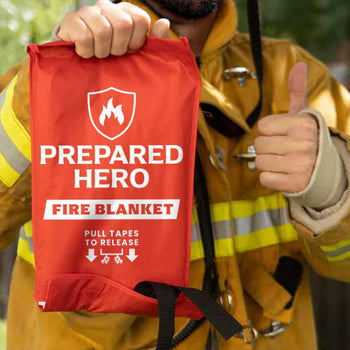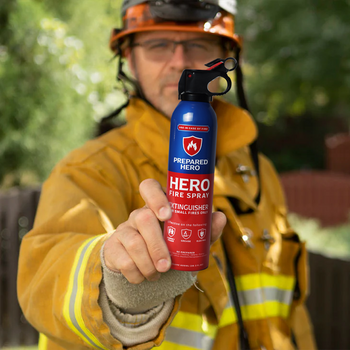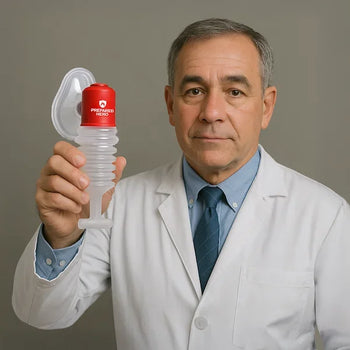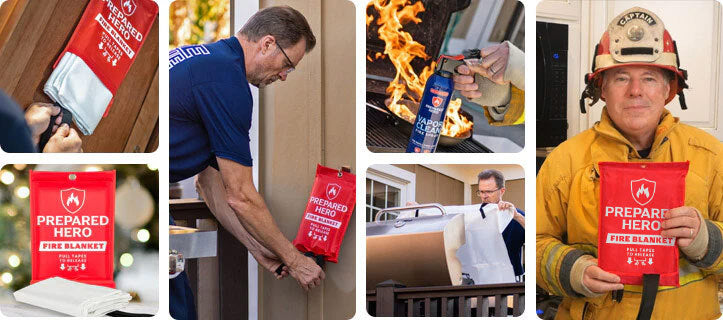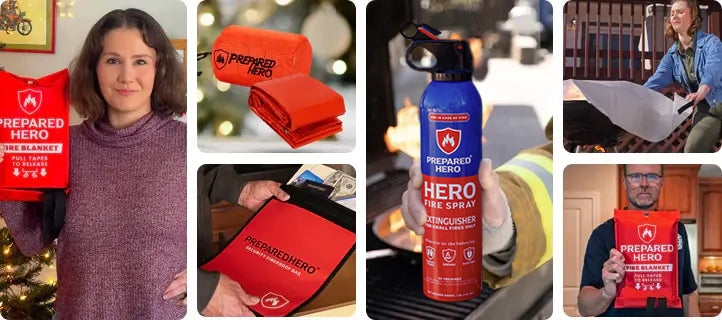Where you put your smoke detectors matters just as much as installing them. Proper placement makes sure they can detect...
Knowing how each component of the fire triangle works helps you put out fires more effectively to protect your loved ones and property. But what exactly is the fire triangle? How do you use it to extinguish fire? What are its elements? Let's find out.
What is the Fire Triangle?

The fire triangle, also known as the combustion triangle, refers to the three components needed to start and sustain fire. Fire can’t continue burning without any of the three elements. For instance, a fire blanket puts out a fire by depriving it of oxygen.
As the term suggests, the fire triangle has three elements: heat, fuel, and oxygen. Let's take a look at these components in detail below:
1. Heat
Heat initially ignites the fire. It also sustains it and allows it to spread. In particular, heat allows fire to spread by drying out and heating the fuel. It also warms up the surrounding air.
Heat can come from many sources, including open flames, electrical equipment, and friction. Plus, heat sources can be natural or man-made. For example, the sun and lightning are natural heat sources, while cooking appliances and lighters are man-made.
Once ignited, the fire will continue to produce heat, which helps it spread. This heat can cause burn injuries or ignite fire hazards beyond the area of origin. The heat generated during this process sustains the fire and keeps it burning.
Once the fuel gets heated up enough, it reaches a point where it continues to burn until it’s extinguished or used up. Unfortunately, combustion reactions also produce heat as they burn. This increases the fuel's temperature and makes the fire worse.
Heat also plays a huge role in determining a material’s flash point. Flash point refers to the temperature at which a material will ignite. Knowing this helps you understand the danger of flammable and combustible materials.
2. Fuel
Fuel is any kind of material that burns when exposed to enough heat and oxygen. It’s usually characterized by its size, moisture content, shape, and quantity. Common fuels include diesel, gasoline, vegetable oil, paper, wood, and cloth.
Just like how a vehicle needs fuel to run, a fire also needs fuel to continue burning. Like heat sources, fuel can also be natural or man-made. Natural fuels include wood and leaves. On the other hand, man-made fuels include plastic, fabric, and gasoline.
You should also note that fuels burn at different rates and temperatures and produce various flames and smoke. A flashover happens when all combustible fuels in a room reach their ignition temperature at the same time. When this happens, the heated vapors burst into flames and create a massive fireball that consumes the room.
On the other hand, a backdraft happens when oxygen-deprived fire conditions suddenly get exposed to fresh air and cause a violent explosion. Backdrafts are dangerous and can cause severe harm to anyone within their vicinity.
Some materials also burn more easily than others. Plus, fuels are the most difficult component of the fire triangle to remove, so store them appropriately.
3. Oxygen
Oxygen is the last element needed to sustain a fire. When fuel burns, it reacts with oxygen from the surrounding air. It then releases heat and combustion products (e.g., gases, smoke, and embers). This process is called oxidation.
The role of oxygen in the fire triangle is to help oxidize or break down fuel into smaller combustible compounds and release energy and heat. The oxygen in the surrounding air diffuses and reacts with the fuel. This makes the fire’s temperature higher and the flames brighter. Oxygen also supports combustion, and an adequate supply of oxygen can make the fire spread faster. In wildfires, oxygen, moisture, and wind play crucial roles in determining their intensity and spread rate.
The atmosphere contains 21% oxygen. Most fires require at least 16% oxygen, so there’s plenty to start a fire. On the bright side, oxygen is the easiest component to remove. Fire blankets take advantage of this by removing the oxygen from the equation. When faced with a small fire, simply cover it with the fire blanket and wait for the flames to die.
What Is the Fire Tetrahedron?

As discussed above, fire needs specific elements to start and continue burning. The original concept was the fire triangle, which included fuel, heat, and oxygen. But in more recent years, a fourth component, the chemical chain reaction, was added. This expanded the model into the fire tetrahedron, a four-sided pyramid that aims to explain fire dynamics better.
The transition from the fire triangle to the fire tetrahedron was a significant step in understanding fire. While the fire triangle explains basic combustion, the tetrahedron gives a more complete picture, especially when it comes to modern fire extinguishing methods. This expanded model shows how interconnected the elements of fire are.
It’s safe to say that the fire tetrahedron is an extension of the fire triangle. The fourth element is the chemical chain reaction, which sustains the fire.
The chemical chain reaction starts when heat breaks down fuel molecules. As a result, reactive particles called free radicals are released. They interact with oxygen to produce more heat, which breaks down more fuel molecules. This process creates a self-sustaining loop that keeps the fire burning.
Breaking the chain reaction is a key strategy in fire suppression. Once the chain reaction stops, the fire cannot sustain itself, even if fuel, heat, and oxygen are still present.
In short, four elements—fuel, heat, oxygen, and the chemical chain reaction—should be present according to the fire tetrahedron. Removing any one of these elements puts out the fire.
For example, water removes heat, while extra large fire blankets block oxygen. Removing flammable materials eliminates fuel, and clean agent extinguishers disrupt the chemical chain reaction.
Breaking the Fire Triangle

Putting out a fire means removing one or more elements of the fire triangle. Oxygen is the easiest element to remove, followed by heat and fuel. Fuel is the hardest element to remove because it’s almost, if not impossible, to separate it from the flames.
Fire sprays or extinguishers work by removing one or more elements of the fire triangle. For example, an ABC fire extinguisher contains a dry chemical powder that interrupts the chemical reaction of the fire by creating a barrier between the fuel and oxygen. With the right type of fire extinguisher, most fires can be put out relatively quickly.
In the case of some fires, water can put out a fire. It works by cooling the fuel and reducing heat. As the fuel cools, the fire becomes weaker until it can’t sustain itself. However, in some cases, using water can make the fire worse. In particular, water spreads grease fire and can electrocute you when used against a Class C or electrical fire. Check out how to put out a grease fire and an electrical fire here.
Removing the oxygen is another effective way to put out a fire. This is why smothering a fire with a fire blanket works. Once the oxygen is gone, the fire can no longer sustain itself and will slowly die out.
However, you should remember that each type of fire and the best way to put them out varies. For instance, a Class A fire extinguisher won’t work on a Class D or metal fire. Plus, water works on Class A fires but not on Class K fires. Understanding the fire triangle and the different ways to fight fire keeps everyone safe.
How to Remove Heat

Fast-moving air can help remove heat from a fire, just like blowing a candle. However, a fire larger than a candle's can't just be blown.
Hence, you need water or a cooling agent to remove heat from a fire. Using a water fire extinguisher is one of the safest ways to do this. However, not all types of fire can be extinguished by water. For example, water can make grease fires in the kitchen worse, so you shouldn't pour water on it.
How to Remove Fuel

Fuel is the hardest component to remove because you can't remove the burning material while the fire burns. Removing fuel is more on the prevention side.
Using fire-resistant materials helps you prevent the fire from starting and spreading. Fire-resistant materials can be used in manufacturing items like building materials and furniture.
In addition, you should keep flammable materials away from heat sources.
How to Remove Oxygen

Safely remove oxygen from the equation using a fire blanket. Fire blankets like the Emergency Fire Blanket and the Hero Fire Blanket remove oxygen by suffocating the fire. You can also use a carbon dioxide or foam fire extinguisher to remove oxygen from the fire.
Conclusion
Removing one component of the fire triangle lets you put out a fire. While removing fuel is almost impossible, you can remove oxygen and heat with the proper knowledge. So, the next time you encounter a fire, think about removing these two components.
Do you want reliable, easy-to-use, and affordable tools to put out small fires before they spread? Check out Prepared Hero’s fire prevention tools here, and get up to 51% off on certain items. Stay prepared, hero!


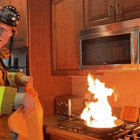 Fire
Fire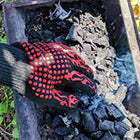 Safety
Safety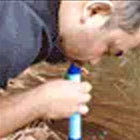 Survival
Survival Protection
Protection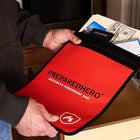 New
New
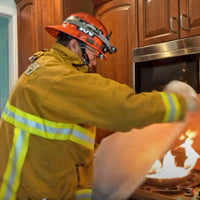 Fire
Fire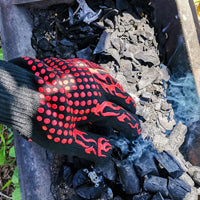 Safety
Safety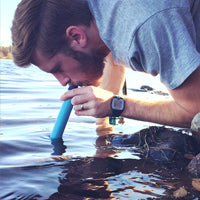 Survival
Survival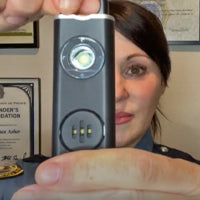 Protection
Protection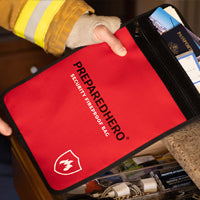 New
New
